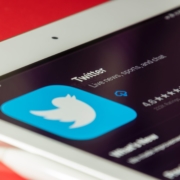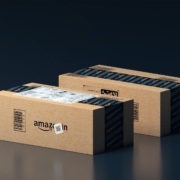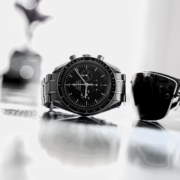Sears: The Agonizing Attrition of An Icon
As we enter the holiday season, we learn from BusinessWeek that Sears, once America’s holiday shopping mecca, is barely alive, in the continuing agony of attrition. The sadness of Sears is palpable.
Let’s face the facts: Sears is no longer a living brand. Some refer to Sears as a zombie brand: no longer alive but lingering on the landscape. At this moment, according to a recent BusinessWeek article, Sears has fewer than two dozen stores. The fact that there are fewer than two dozen stores actually operating is a miracle. In 2021, there were about 40 Kmart and 39 full-line Sears stores left. Some press reports indicated that there would be 15 Kmart and 19 Sears stores left after November 2021 closings. Over the past 16 years, Sears and Kmart have shuttered more than 3,500 stores eliminating 250,000 jobs.
Business press and retail observers place most of the blame for Sears’ – and Kmart’s – demise on Eddie Lampert, the hedge fund magnate. According to the latest from BusinessWeek, “… years of underinvestment and dismantling under the stewardship of its would-be savior, hedge fund manager Eddie Lampert, also helped bring the company to this moment: it’s sprawling suburban headquarters on the block, signature brands including Craftsman and DieHard sold, and most of the jobs that Lampert’s purchase was supposed to preserve gone.” The general opinion is Mr. Lampert’s extraordinary talent for financial engineering and management by cost-cutting, of which he was the beneficiary, put Sears and Kmart into their vicious vortexes of death. Continuing in its analysis, BusinessWeek states the unfortunate situation that led to Sears’ demise was this, “Effectively, Sears was Lampert, and Lampert was Sears—pouring hundreds of millions of dollars into the company but also reaping hundreds of millions from interest, fees and asset sales.”
From a brand standpoint, Sears is a classic case of death by brand mismanagement. Let’s look at how Sears became a barely alive brand to its owners but an-already-dead brand to its customers.
First, arrogance is a killer characteristic
Success is everybody’s aim. Sears had decades of successful retail dominance. From its beginnings in 1893, Sears was America’s mall. With expertise in selling everything Americans could want (America’s Everything Store) with storied, trusted brands such as Kenmore, DieHard and Craftsman, Sears was the Amazon of its time. The Sears catalog was ubiquitous in American homes; yesterday’s version of long-distance, not-in-person shopping.
However, this great success fueled arrogance. Sears’ management’s mentality was that it could do no wrong. Sears believed it could sell anything and everything. Its retail outlets featured real estate (Coldwell Banker), financial services expertise (Dean Witter Reynolds) and Discover credit card. The diversity of these brands led to management taking its eyes off of the Sears brand. In a blink of an eye, Walmart became America’s brick-and-mortar everything store. Nothing Mr. Lampert’s team did changed Sears’ trajectory.
Thinking that you know everything and can sell anything is admirable. But, it is also dangerous. A review of Boeing and its tragic 737 Max crashes cites arrogance as one of the factors leading to Boeing’s being toppled from its top perch in aviation. The downfall of crypto exchange FTX is also a lesson in arrogance.
Avoiding arrogance takes effort on the part of leadership. Great leadership means fighting the inclination to focus on oneself rather than the customer and the brand. The leader who creates a culture of arrogance by letting success go to the and egos of managers is a leader who is more committed to self rather than brand.
Second, comfort feels good but it leads to complacency
Avoid complacency at all costs. Complacency stops innovation, renovation and keeping up with changing customer values and behaviors. Complacency allows employees to continue doing what they are most comfortable doing. Complacency lulls people into laziness and inaction. Complacency crushes curiosity and creativity. Complacency allows people to avoid looking at trends and changes. According to some, complacency leads to market share loss and underperformance. Complacency is passive. Brands are not passive. Brands are active promises of an expected relevant, differentiated experience.
Apparently, Sears did not appreciate the rise of big box stores. Sears ended the catalog. Sears neglected investment in e-commerce. Lack of investment turned Sears stores into unlit empty boxes. Sears was fat, rich and complacent, said one observer. He added that the brutality of retailing combined with a Sears’ management’s self-satisfied complacency and arrogance allowed the great retailer to suffer.
Third, financial engineering above customer satisfaction is never the answer
The business press and analysts have been vocally public that Eddie Lampert “… undertook some of the most complicated and thorough financial engineering the (retail) industry has ever witnessed and which has now become infamous among retail observers. The recent BusinessWeek story indicates that Mr. Lampert had for years used his hedge fund “… to lend to and control Sears, while he was also the company’s CEO and chair.”
Financial engineering is the catchall phrase for extreme cost cutting including job losses, debt accumulation, share buy-backs, increased dividends, forced spinoffs and money siphoned into the pockets of investors rather than invested into businesses. Financial engineering can damage brands. This is because the priority of financial engineering is building shareholder value at the expense of customer value… a formula for failure. Boeing suffered from cost-cutting and suffered catastrophic consequences.
Financial engineers see strong brand equity as an opportunity to extract value rather than extend brand strength. This is a form of brand extortion. Last year, an observer stated, “(Eddie Lampert) is a mastermind of the corporate rule book. He was always manipulating Sears for the most profit for the owners of Sears, or for the companies he created to benefit from Sears.”
Another industry consultant stated that “Sears, under Mr. Lampert, had always been a, financial play.” Of course, he added, there were some things that could be achieved with the (Sears’ and Kmart’s) property. But, there is really and realistically no future for the Sears brand. And, yet, there are still some stores in place when everyone agreed that Sears would be effaced from the retailing earth.
Sears lost relevance
Staying relevant means always staying aware of marketplace changes, altered customer behaviors and attitudes, competitive brands and your brands. Relevance requires learning about customers’ needs, problems and occasions of use that the brand satisfies better than alternatives.
When a brand loses relevance, it can come close to death. However, brand demise is not inevitable. Ongoing brand management is a leadership challenge. Based on various reporting, it appears as if Sears’ and Kmart management was not focused on the customer.
People who followed Sears were convinced for years that Mr. Lampert’s approach was anti-user. As one person posited, “There’s no love for the consumers, no relevance for consumers. There is no intention there of (operating) as a legitimate retailer.”
In the 1970s and 1980s, Sears and Kmart were America’s largest and second largest retailers, respectively. Now, Sears and Kmart are irrelevant shadows, ghosts of arrogance, complacency and financial engineering. Coming back to life will take leadership that cares about the brands. There is no indication that exists. The brands are a financial play.
Coming back to life means asking customers to care about the brands. Retail observers say that shoppers do not seem to care about Sears and Kmart anymore. One observer asked, “Why would you care?” If you can even find a store, the experiences do not compare to competition. The once-treasured Sears and its brands are distant memories, as is Kmart.
Loss of relevance stems from lack of innovation and renovation. And, it comes from taking your eyes off of the customer. With proper resource allocation – not financial finagling – and a passionate belief in the brands, brands can recapture relevance again. There is no indication that this will happen.
Brands do not die natural deaths. As Sears and Kmart show, deaths and declines of brands generate internally from mismanagement and nonbelief. Brands can be revitalized but it is unclear if revitalization is in the works at Transformco. In the meantime, Sears and Kmart are in a twilight zone, shadows of their former selves, drained of life but still walking the earth, waiting for the inevitable. Eventually, all the life will be sucked out of Sears and, then, Kmart. When wringing all the worth out of a brand is the goal, there is no going back. The slow attrition of Sears is a sad fact. Sears… and its sibling, Kmart… are poster children for the fact that you cannot cost manage your way to enduring, profitable growth.










